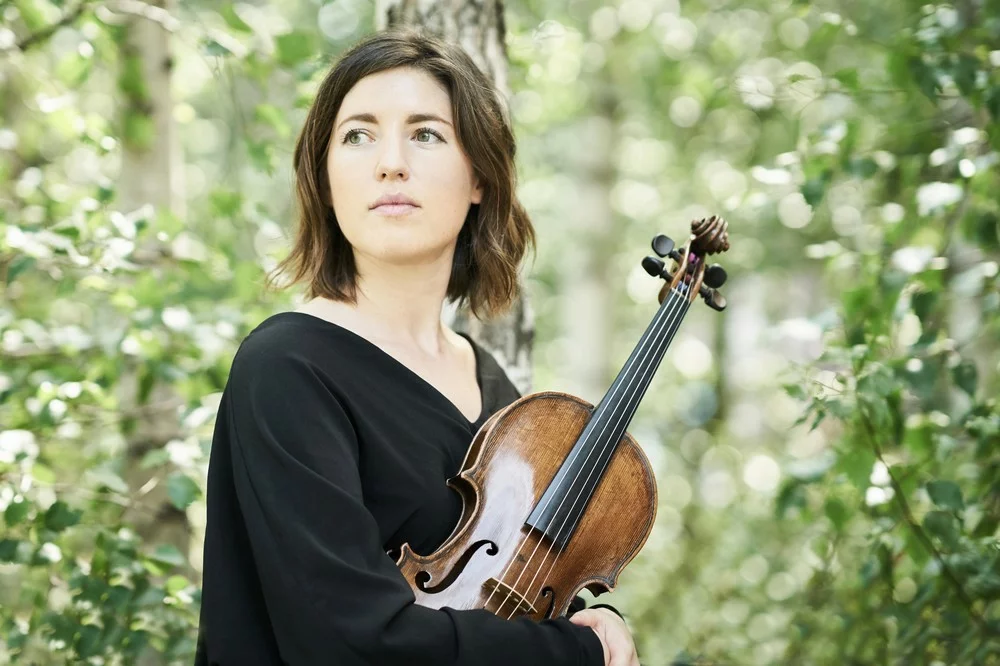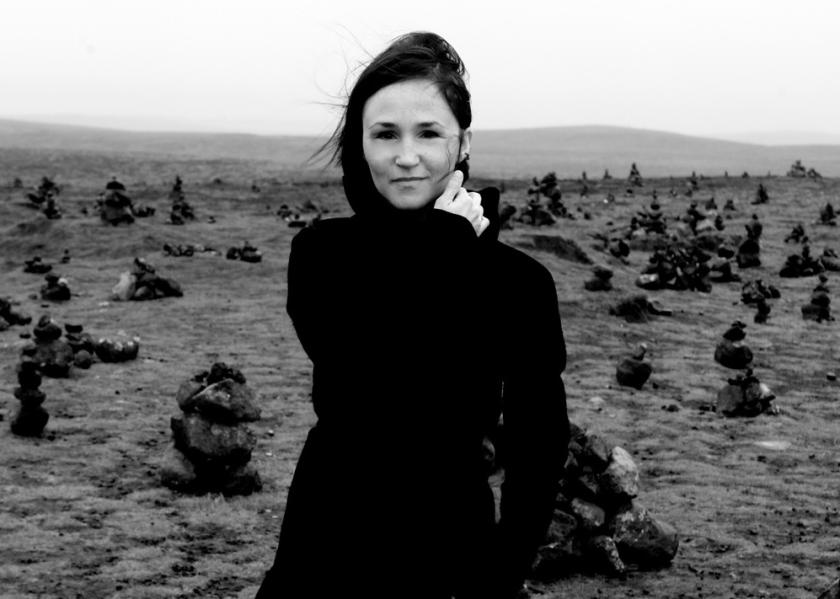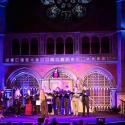The Icelandic composer Anna Thorvaldsdottír found her work put under a strangely unforgiving lens when it was featured in Tár, the now infamous Todd Field film made in 2022 starring Cate Blanchett as a tempestuously exacting female conductor. In a scene where Lydia Tár is taking a masterclass at the Julliard, she savages a student who is conducting a string quartet playing Thorvaldsdottír’s music, saying it sounds like “tuning up”.
Yet it’s part of the film’s sophisticated psychological narrative that this scene, far from condemning Thorvaldsdottír’s music, represents Tár’s divorce from the person she used to be before she reinvented herself to embody rigid patriarchal standards. It’s about artifice over instinct, about the donning of emotional armour rather than embracing emotional openness, the fierce desire to be established instead of looking towards an experimental future.
For those who aren’t acquainted with Thorvaldsdottír’s raw elemental work – which goes from quiet-as-a-breath delicacy to passages as momentous as the rumblings of a volcano – the Aurora Orchestra’s immersive performance at Kings Place on Saturday provided a fascinating insight. In a beautifully thought-out programme they presented her 2015 work, In The Light Of Air along with other experimental composers inspired by nature, ranging from the John Cage-influenced Takemitsu to that most famous of tradition-smashers, Debussy.
The concert took place in Hall Two at Kings Place, which had been reconfigured so the audience was sitting in the round, so close to the players you could almost reach out and touch them. The central piece was written for viola, cello, harp, piano, percussion and electronics, and in order to prepare us for this sound world the evening began with pieces that showcased individual instrumentalists interacting with recorded material.
The first piece, Takemitsu’s Stanza II, was for solo harp and tape. Sally Pryce expertly demonstrated the harp’s reconfigured soundscape, responding to meditation-bell-like sounds from the tape with spiky cascades of notes interspersed with the resonant rattle of lower strings. Sometimes she beat her hands percussively on the frame at others she twanged the strings so that you could sense their texture as much as their pitch. The tape itself felt like a dreamscape from a world gently out of kilter; on occasions you could hear birdsong, at others a drone that whined like an electronic mosquito.
In the second piece, cellist Sebastien van Kuijk performed Michael Gordon’s The Light Is Calling for amplified cello and audio playback, “a meditation on the random and fleeting nature of life and love”. This gently disorientating music has been used as the soundtrack to a short film directed by Bill Morrison, an elegiac work that shows a soldier meeting a woman in the woods, their encounter captured on decomposing film reel (from James Young’s 1926 The Bells) that flares and flickers like flames on a dying fire.
We did not see the film at the concert, but even so we got the sense of the febrile, pulsating emotions that drive it, underscored by bitter melancholy. In contrast to the otherworldly, distorted nature of the electronic track, Kuijk’s cello made its impact through a series of sustained notes played with a resonant vibrato, gradually ascending higher and higher, like a lark against a shimmering hallucinogenic sky.  However, the undisputed highlight of this early section of the concert was Ruth Gibson’s performance of "Hora lungă", the first of six movements in Ligeti’s Viola Sonata. Inspired by Romanian folksong, it’s highly technically demanding, not least since the whole movement is performed in microtones on the C string. Gibson (pictured above by Kaupo Kikkas) excavated the beauty as well as the brilliance of Ligeti’s vision, making the viola weep as she swept from the aching intensity of the lower notes to the vertiginous harmonics. After this we had Pryce on the harp again playing Debussy’s impressionistic, transcendent Pas de Neige, a suitably elemental work as a prelude to In the Light Of Air.
However, the undisputed highlight of this early section of the concert was Ruth Gibson’s performance of "Hora lungă", the first of six movements in Ligeti’s Viola Sonata. Inspired by Romanian folksong, it’s highly technically demanding, not least since the whole movement is performed in microtones on the C string. Gibson (pictured above by Kaupo Kikkas) excavated the beauty as well as the brilliance of Ligeti’s vision, making the viola weep as she swept from the aching intensity of the lower notes to the vertiginous harmonics. After this we had Pryce on the harp again playing Debussy’s impressionistic, transcendent Pas de Neige, a suitably elemental work as a prelude to In the Light Of Air.
Now we had arrived at the evening’s centrepiece. It’s inherent to Thorvaldsdottír’s work that she grew up in a tiny Icelandic town surrounded by mountains and the ocean – when she evokes the natural world there’s a sense of its potential brutality as much as its beauty. The first movement, "Luminance", began with the amplified sound of the musicians’ breathing, then as it developed, percussion and electronics provided sinister undertones as the viola and cello introduced shards of glittering sound through harmonics. At points John Reid on the piano added swirling ghostly effects by brushing a drumstick over the strings.
In "Serenity", cascades of notes and glissandi on the harp were heightened by passages that sounded like distant thunder on the piano. George Barton on percussion gently cut through the smoother textures with muted bell tones and the clack of wood on wood, while the viola introduced its own eery lament. "Existence", the third movement, slowed the pace right down, starting with repeated chords in the left hand on the piano, and building its impact through a soundscape dominated by electronic rumbles and echoes. At various points both the pianist and the harpist used clusters of horsehair – like bows without the wooden frame – to brush the stings of their instruments, creating subtle metallic whispers.
In the final movement, "Remembrance", the viola and cello sculpted melancholic melodies as the piano and percussion spiked the mood with subtle, hard-edged sound. For this movement, the artist Svana Jósepsdottir had designed metallic ornaments specifically for use in the percussion section, heightening the sense of an auditory world that transcends conventional musical experience.
When the performance finished, there was a long meditative silence before the audience erupted into extended applause. It was an apt response to a conceptually elegant, flawlessly executed evening that in all sorts of ways transported you to a different dimension.













Add comment